The state of product at publishers
Back to basics

In December 2012, The New York Times published “Snow Fall: The Avalanche at Tunnel Creek,” a six-part multimedia package that not only won a Pulitzer Prize but also a Peabody award for its trailblazing approach to interactive storytelling. It spawned many imitations as publishers began to take cues from Silicon Valley and establish product functions.
Fast forwarding to today, the Snow Fall days seem quaint. The product functions that grew in subsequent years have become core parts of the publishing function, as critical as content and sales. The function has morphed to drive business goals well beyond storytelling.
The Rebooting surveyed 52 product executives at publishers and found that back-to-basics ethos that skips the flash of Snow Fall in favor of what one product leader called “smaller wins throughout the year.” That prioritizes blocking and tackling like website performance and data management.
This is, of course, happening against the backdrop of severe challenges facing the publishing business, from steep traffic losses, a hyper-competitive ad market, the loss of ad targeting signals, and slowing subscriptions.
It’s no surprise that many product leaders rated their organizations as immature and underfunded, often stymied by misaligned incentives.
“We don't have a modern product function,” said one. Groused another: “Product at my company is a set of glorified project managers taking orders from their newsrooms and leadership, with no product vision or strategy to speak of.”
Few feel prepared for the coming AI era, with “efficiency” as the biggest promise identified.
The role of product will undoubtedly morph in an AI era. Many respondents report depending heavily on external partners, a trend likely to continue as product plays the role of connective tissue among departments and partners to develop audience-centric sustainable business models.
Thanks to WordPress VIP for sponsoring this research and to David Kaplan for contributing writing and research.
The current state of product
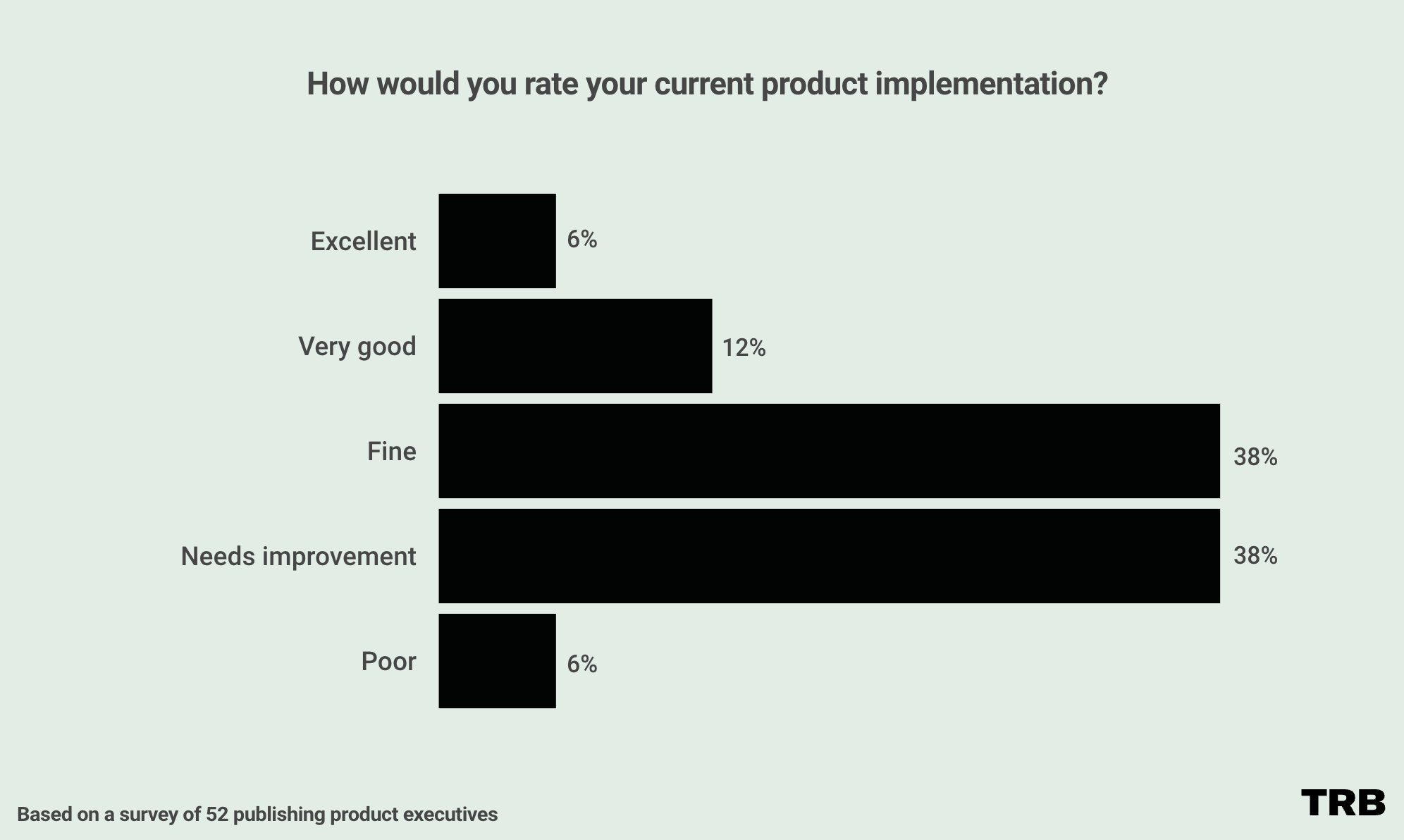
Like most modern business trends, product management emerged from Silicon Valley. The inherent complexity of software created a need for a discipline that would tie consumer needs with business goals when building tech solutions.
Its arrival at publishers was an inevitable outgrowth of “software eating the world,” as Marc Andreessen put it. It’s also not without its challenges. None of our respondents rated their current product implementation as excellent, and just 12% percent rated it as very good. By contrast, the most common rating was needs improvement (38%) and fine (38%).
“We don't have a modern product function,” said one respondent, “but we have recognized the need for one and are in the process of designing it and hiring for it.
Funding issues
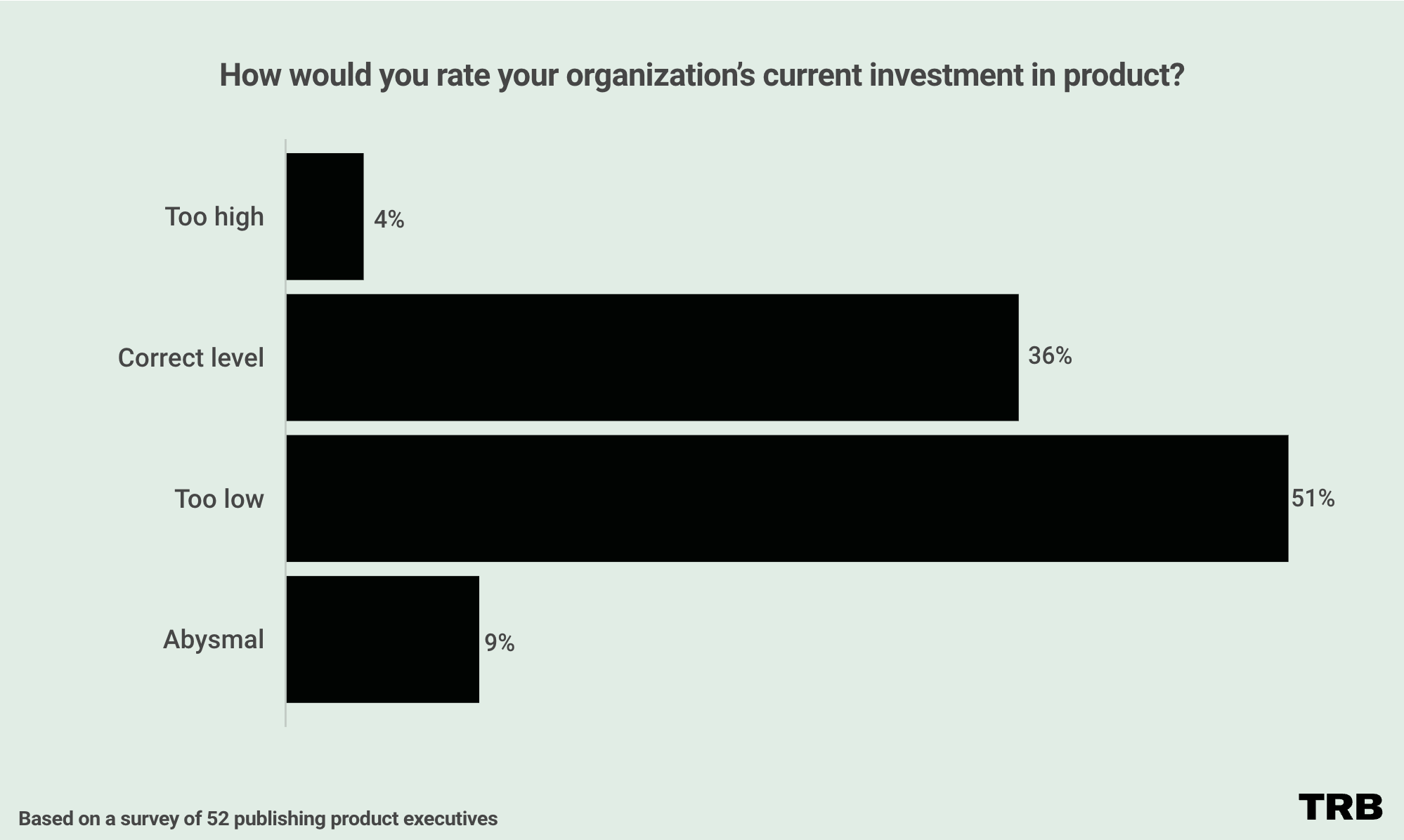
Respondents to The Rebooting’s survey indicated they struggle to get the proper level of investment needed to maintain a performant, modern tech product. Over half of respondents rated their organization’s investment in product as too low. The New York Times is an exception, with hundreds in its product division.
“Everybody else has to be more scrappy, more tactical, and do more with less,” said Brian Alvey, CTO of WordPress VIP, an enterprise-grade CMS.
Publishers are facing a multitude of business challenges, which have a cascading effect. The winds of change in the industry have shifted from chasing shiny objects and the fleeting sugar-high of social traffic to building sturdier foundations based on deeply understanding audiences through loyalty.
“We're sitting across all of the businesses within media and thinking critically about how well we understand who our audience is,” said Marissa Zanetti-Crume, global head of product at Bloomberg Media. “How do we make our news truly relevant and timely? We talk directly with subscribers about that. It’s what inspires the design and product work we do.”
That takes investment. Bloomberg is uniquely positioned with an ingrained product ethos thanks to its position within Bloomberg LP, home of The Terminal. For other publishers, the challenge is accomplishing similar goals without as much investment.
Finding alignment
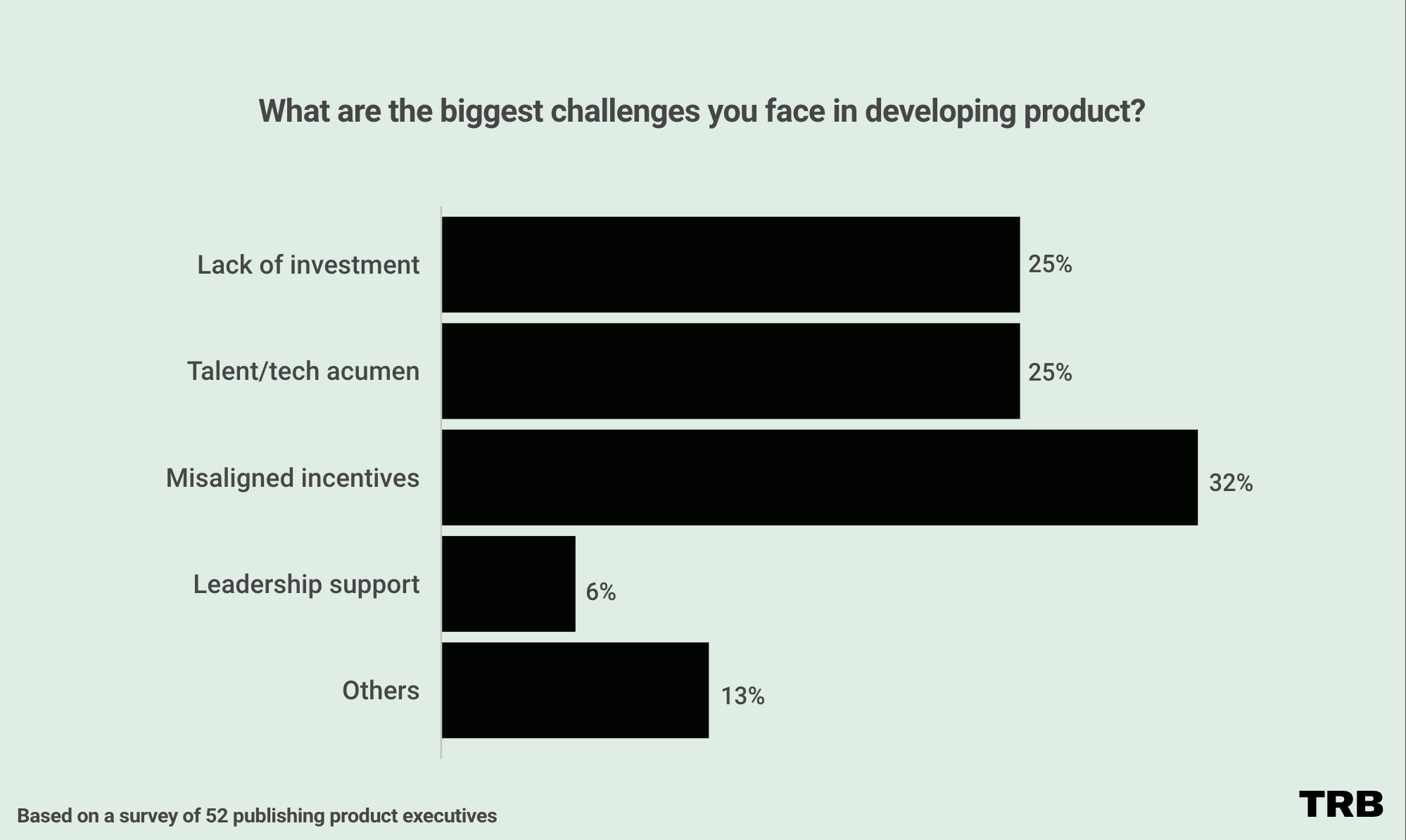
Historically, news publishers have needed to overcome a “church and state” divide between the editorial and sales sides. That’s even more complicated in modern publishing, as publishers navigate different departments with different goals.
Product groups are often caught between competing priorities. On the one hand, they are tasked with creating audience-focused products. On the other hand, they are charged with driving forward business goals. As one respondent put it there is a “general misunderstanding of the importance of product.”
“There are essentially two product teams at a media company,” said Angus Macaulay, COO of Stat, a health news brand launched by The Boston Globe in 2015. “One is the editorial team and the news they produce—and they don't want to be called ‘product.’ But that is the product that people are paying for: the words on the page, not the page itself. So the newsroom comes first, and you as the product head come second. Both are important, but at the end of the day, somebody's going to subscribe or cancel primarily based on whether or not the news they get is applicable. No one’s unsubscribing because the page didn’t load fast enough.”
Staffing up for a product role within a publisher requires a great deal of diplomacy and a considerable degree of media insight that makes the job very different from handling engineering and design within any other type of entity, Macaulay said.
When Macauley was interviewing for the head of product role a year-and-a-half ago, one thing he made clear from the get-go with candidates who came from a tech company background was the recognition that the hierarchy and dynamic is very different at a media company.
Said one respondent: “Product managers tend to be promoted from project managers, which is a completely different skillset.”
The most common issue identified was, again, lack of investment. Many also struggle with attracting talent and matching the pay offered by tech companies.
The website’s demise has been greatly exaggerated
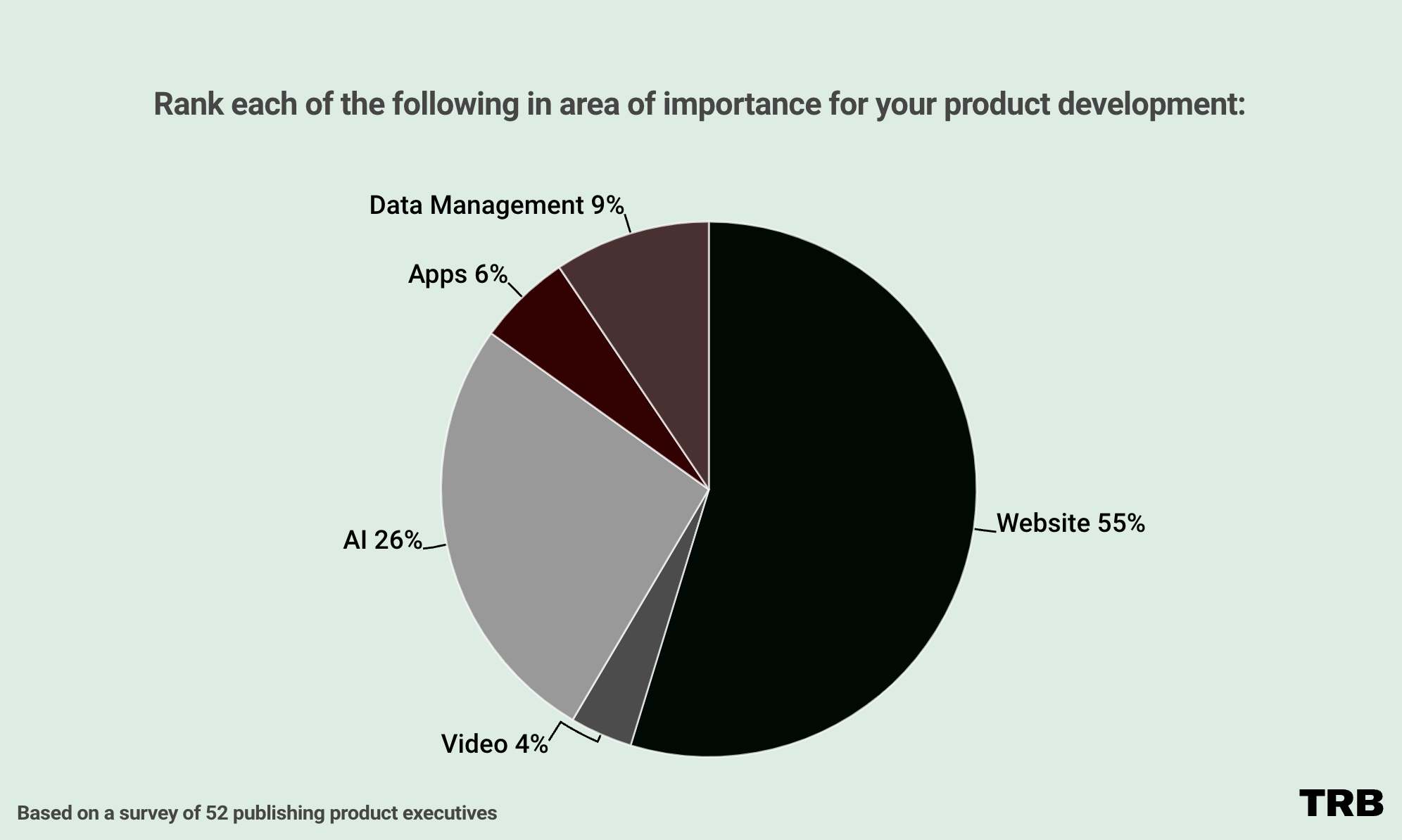
The open web is under pressure from all sides. Facebook has all but ceased sending traffic to publishers, Google is sending less and undergoing its own generative AI makeover, and digital ad models are challenged by targeting issues and a hyper-competitive market.
Yet the website, the core of the open web, is still the main area of investment for publishers. The vogue for “distributed models” and a “fish where the fish are” has given way to a return to drawing people to owned-and-operated websites and apps. In effect, publishers are opting for depth over breadth.
Just over half of respondents ranked their websites as the top product development priority.
The homepage is a hub that reflects and supports Bloomberg’s other audience points of connection. Zanetti-Crume emphasized that the homepage as a product succeeds in concert with Bloomberg’s mobile app, its ad and data products, along with its video franchise Screen Time and event-related products.
The partnership path
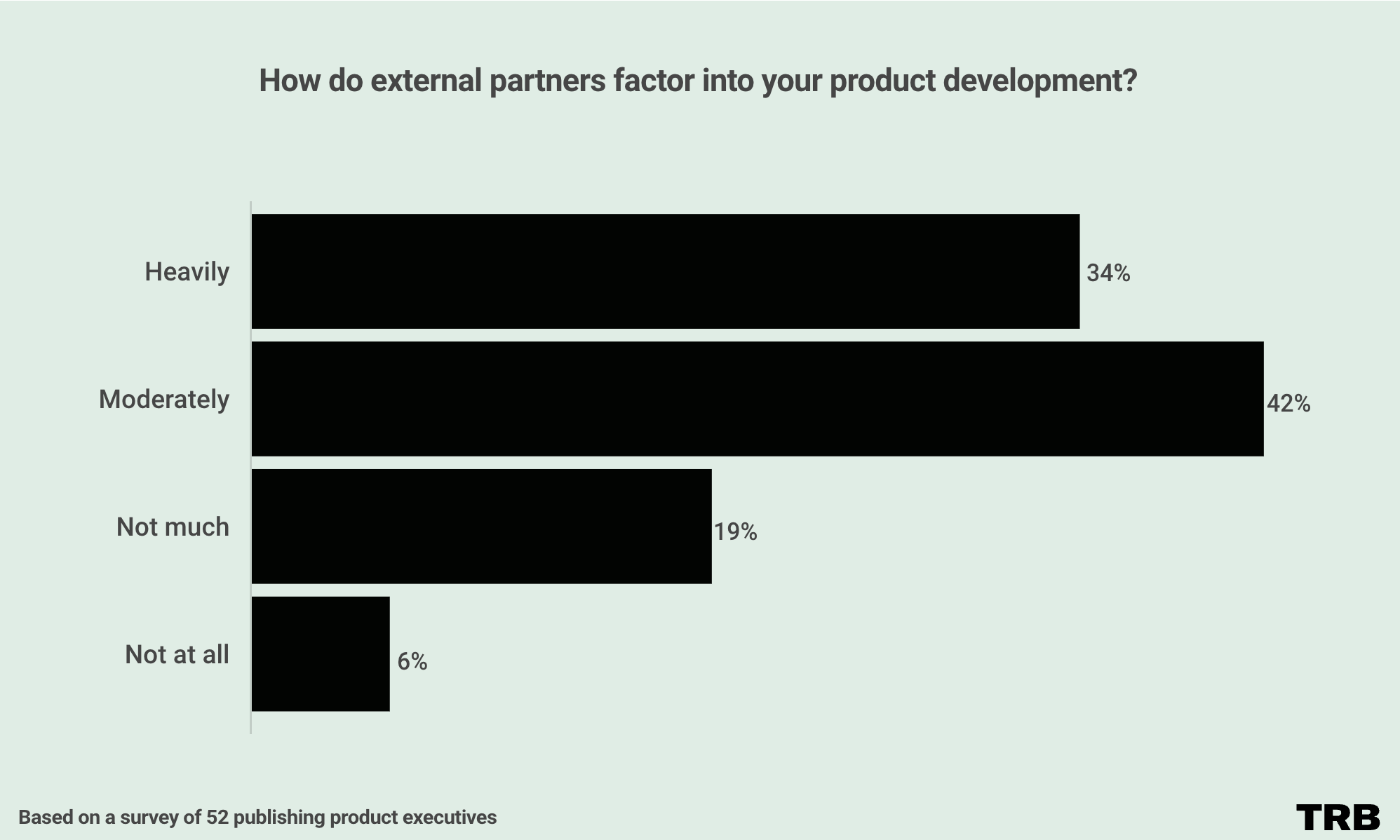
There was a time when some prominent publishers favored homegrown technology with grandiose names, presenting themselves as part technology company with the promise of future SaaS margins. Those days are mostly over, as evidenced by Vox Media’s move in late 2022 to mothball Chorus, its CMS that powered its portfolio of sites and other publisher sites.
“Media companies have realized that they don't have to fight two wars at the same time,” Alvey said. “Maybe we could just focus on doing one thing really well, which is journalism.”
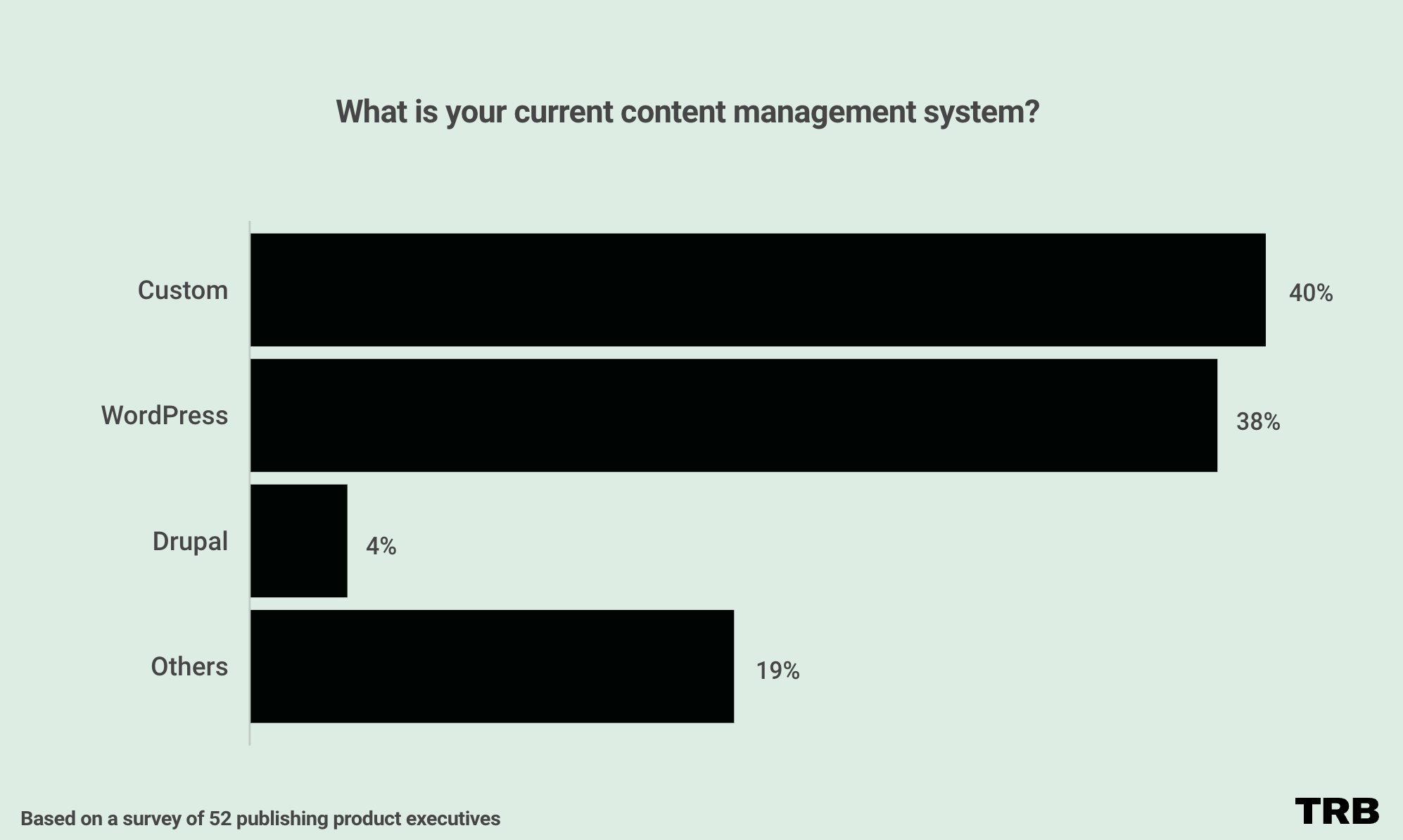
That message is sinking in. A majority of respondents to The Rebooting’s survey indicated they relied moderately or heavily on external partners in their product development.
Her Campus Media, a 15-year-old media company that reaches Gen-Z readers and contributors through a mix of news/community media properties, is retiring a custom CMS it inherited when it acquired food-focused social site Spoon University. “We’re investing more than ever in product this year," said Windsor Western, president of Her Campus.
The AI challenge and opportunity
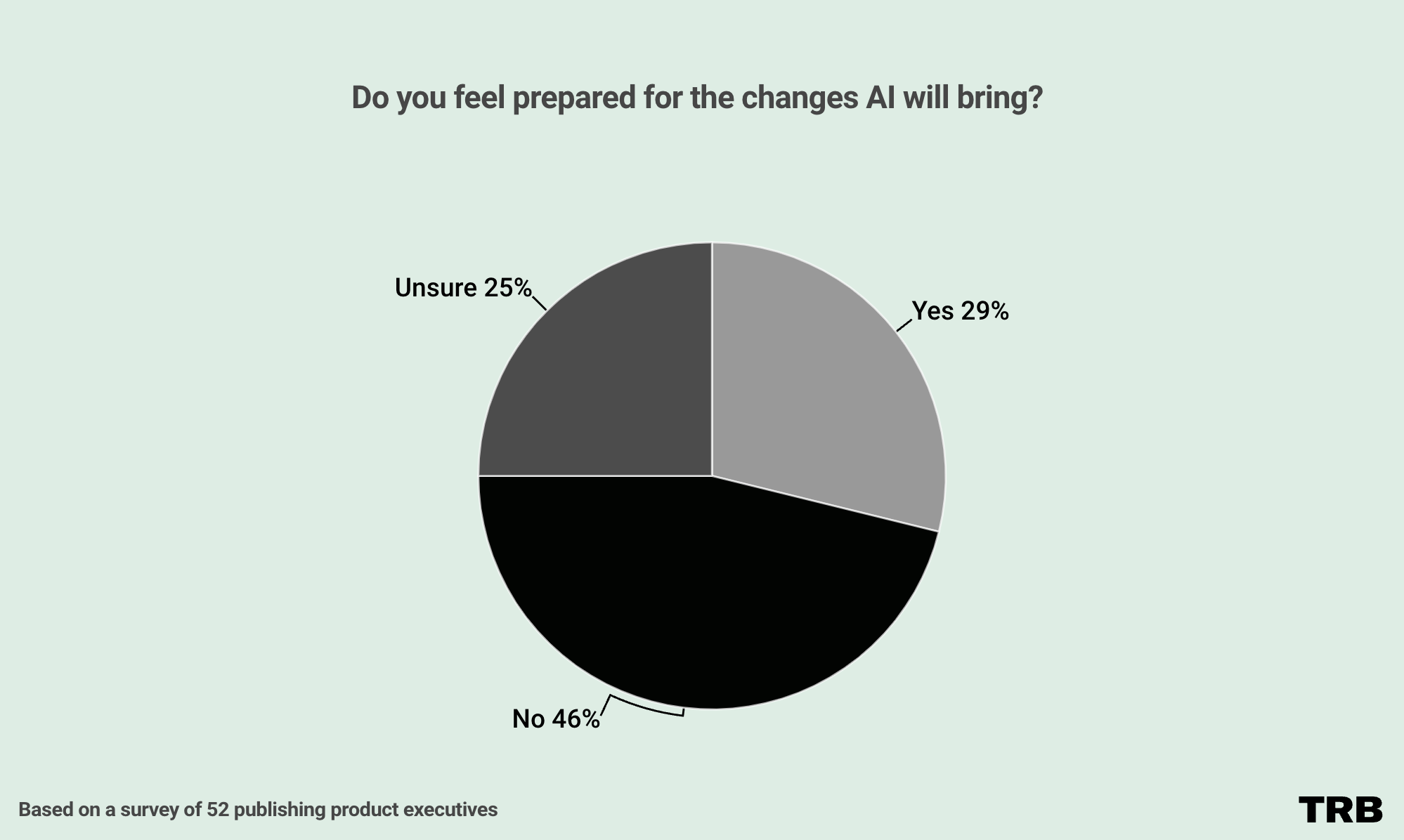
Half of respondents indicated they were either unprepared for the changes AI will bring or unsure. That tracks with conversations across the publishing landscape. The general belief expressed is the field is changing too fast, forcing publishers into a reactive mode.
“I don't think leadership quite understands how much a foundation-shifting impact AI could have for their current business models,” said one.
Much of the narrative around publishing and AI has been fear-driven. On the one end, AI’s intrusion into search threatens publishers with less traffic, particularly to lucrative evergreen content. On the other, AI companies like OpenAI and Perplexity have trained on publicly available publisher data and often give users answers.
Yet like all companies, publishers are exploring how to embed AI within their existing workflows. For example, WordPress VIP's Content Helper helps organizations use their content and analytics data to get bespoke, performance-driven AI suggestions inside the WordPress editor. This past May, The New York Times created an AI Initiatives Team whose mission is to craft AI products for its newsroom, and (potentially) license these tools to other companies. Zanetti-Crume’s team at Bloomberg are also looking at how AI fits into a media company’s product arsenal.
“When it comes to AI, the question we all have to ask ourselves is, ‘How does it help our users? How does it help our workflow? How does it help us be smarter and be more efficient?” Zanetti-Crume said. “All of these things are open questions. What is most critical for us though is that we do it in a way that is responsible to our users, to the brand, and to who we are.”
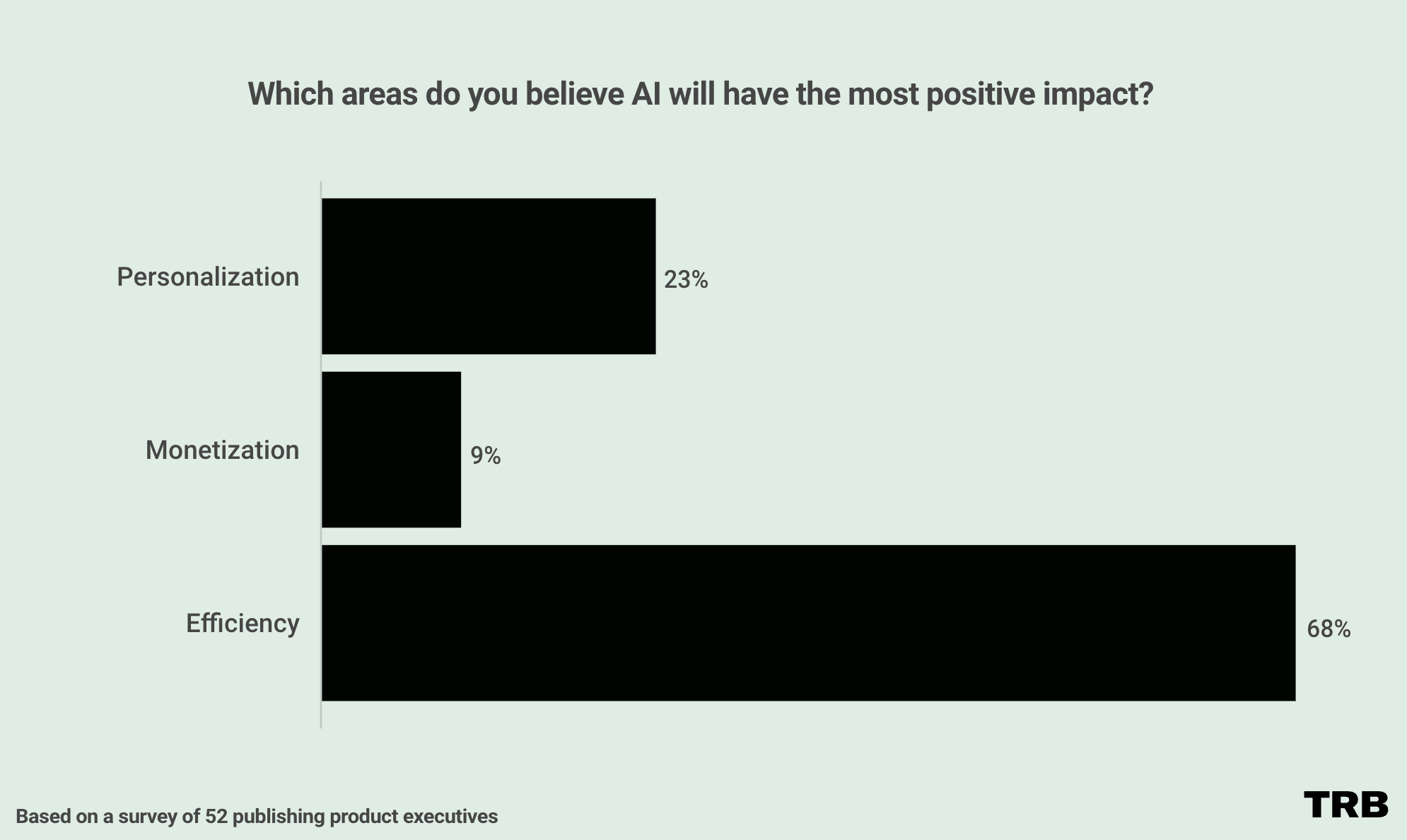
The biggest opportunities identified by respondents sit between a better user experience (personalization) and workflow (efficiency). Of the latter, respondents noted the ability to “help people do jobs faster” and “get rid of the noise and provide more room for second and third order thinking.”
Still, WordPress VIP’s Alvey warns against publishers ignoring the basics surrounding their unique offerings and the benefits of a simple, positive user experience.
“In two or three decades, they’ll still be trying to figure out a three-column layout and how to create a grid showing related stories,” Alvey said. “Publishers really do spend a lot of time reinventing the same thing, which is one reason why many are starting to wake up: ‘Maybe we don't have to have a team that's building the same thing that everybody else has.’ They recognize it as a cost center, an extra weight on their business. And factoring those costs is what publishers have to do when charting their product strategy.”


